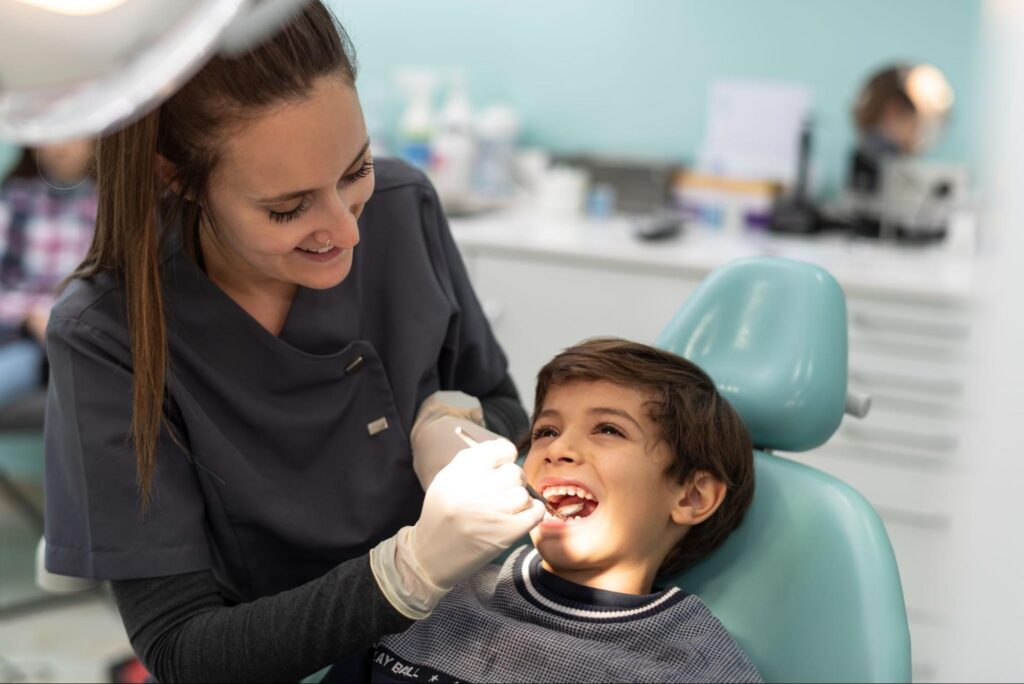Your child hits a certain age and suddenly orthodontics becomes part of the conversation, whether you’re ready for it or not. Maybe their dentist suggested a consultation, or they started asking questions after seeing their friends in braces. Either way, it’s a lot to sort through.
Dr. Kovacs can work with your family in our Billings office to make those decisions easier. Kovacs Orthodontics focuses on honest evaluations, clear treatment plans, and options like clear aligners or metal braces that fit into your child’s day-to-day life.
Modern Options for Orthodontic Treatment in Billings
Braces have come a long way from the bulky versions you might remember. Today’s options are designed to be more comfortable, lower maintenance, and less noticeable, all without losing effectiveness.
Clear aligners are also an option for many, especially those who prefer a more discreet look. Since they’re removable, they can be helpful during sports, school pictures, and social events. Just keep in mind, they only work if your child actually wears them. If consistency is a concern, traditional braces might be a better fit.
How to Know If It’s Time
Not every kid needs braces at age 12, but there are some signs that it’s time to take a closer look.
Common Issues To Watch For
Some of the common problems to watch for that could indicate it’s time for your child to have orthodontic treatment are:
- Teeth that are noticeably crowded or spaced apart
- An overbite, underbite, or crossbite occurs when the mouth is closed
- Difficulty chewing or biting
- Mouth breathing or thumb sucking past age 7
- Frequent jaw clicking, shifting, or discomfort
Sometimes the signs aren’t obvious from the outside. That’s where a consult helps. Dr. Kovacs looks beyond appearances to see what’s happening with growth, jaw alignment, and how the teeth are coming in.
What Treatment Looks Like
Once your child is ready, the treatment plan is built around their exact needs. Some cases are simple and straightforward, others take more time and a bit of strategy. Our office takes a phased approach if it makes sense, especially for younger kids whose mouths are still growing. You’ll always know:
- What the plan is
- Why it matters
- How long it’s expected to take
Most active treatment lasts between 12 to 24 months, depending on what’s being corrected. After that, a retainer keeps things stable while your child adjusts to life without hardware.
Life With Braces or Aligners
This is where the parenting part kicks in. Treatment works best when it fits into your family’s actual life, not just a printed schedule.
Expect A Short Adjustment Period
The first week or two can be uncomfortable. Soreness is normal, whether your child has brackets or aligners. Soft foods, orthodontic wax, and a little patience usually smooth it out fast.
Keep Tools On Hand
A travel toothbrush, flossers, and their case (if using aligners) make a difference. Toss them in a backpack or locker so they’re not caught off guard at lunch or after practice.
Don’t Skip Dental Checkups
Your family dentist is still part of the picture. Regular cleanings are essential during orthodontic treatment, especially with brackets where plaque tends to hang out.
These little details make a big difference. Once the routine sets in, most individuals manage just fine. And yes, your kid can still play sports or their instrument. Just mention it during the consult so we can plan accordingly.
What Parents Ask Most
Here’s a quick look at some of the questions that tend to come up when discussing orthodontic treatment in Billings.
Will they need extractions?
Not always. If there’s severe crowding or impacted teeth, removing a tooth or two might be recommended. However, early treatment often prevents this.
Is it going to hurt?
Getting braces or aligners doesn’t hurt, but there’s usually soreness for a couple of days. It fades quickly and can usually be managed with over-the-counter relief.
How often are the appointments?
On average, every 6 to 10 weeks. Each visit is quick and focused, so you’re not spending hours at the office.
Will they wear a retainer after?
Yes. Retainers are key to keeping their results. Without one, teeth often shift back over time. Our team will guide you on what type and how long to wear it.
Tips to Choose Between Clear Aligners and Braces
Some kids want something low-profile. Others need a treatment plan that doesn’t rely on daily reminders. The right option comes down to more than looks; it depends on your child’s habits, their schedule, and how involved they’re willing to be.
- Removable for eating and brushing
- Nearly invisible when worn
- No food restrictions
- Easy to misplace if not stored properly
- Requires consistent wear (20–22 hours a day)
- Always in place, no risk of forgetting them
- Work well for complex bite or alignment issues
- Can handle more significant movement
- Require extra care when brushing and eating
- May cause initial irritation to cheeks or lips
We can help you weigh those factors honestly. Some kids are a great match for clear aligners. Others benefit more from the structure of braces.
The Experience Families Can Count On
From the first consult, Dr. Kovacs makes it clear this isn’t a one-size-fits-all approach. He will look at what is truly needed, and not just what’s typical for their age. As they grow, the plan grows with them, adjusting based on real changes, not just a preset timeline.
Scheduling is built to support your family, not disrupt it. Whether your family is juggling school, sports, or both, appointments are spaced out, efficient, and on time, so you’re not spending hours in the waiting room.
Clarity You Can Feel Good About
If you’ve been wondering whether it’s time to start orthodontic treatment, a consultation can bring the clarity you’ve been looking for. Dr. Kovacs will take a close, thoughtful look and explain what’s really happening so there is no confusion.
Kovacs Orthodontics welcomes families who want trusted guidance, real answers, and a plan that feels doable from the start. Schedule a free consultation to start your orthodontic treatment in Billings.
 Free Consult
Free Consult


